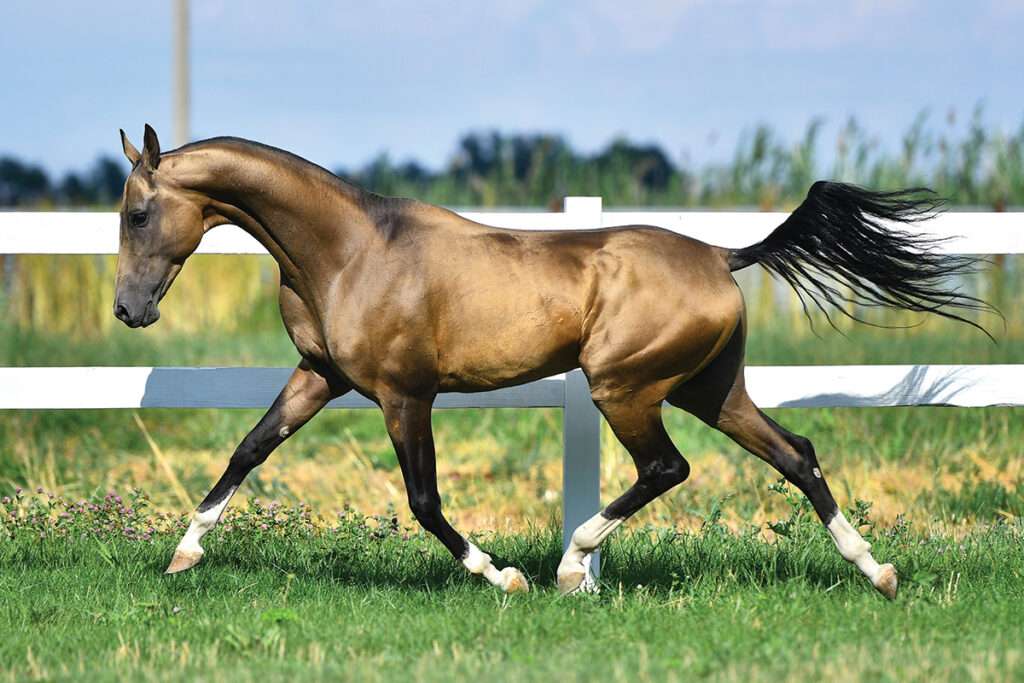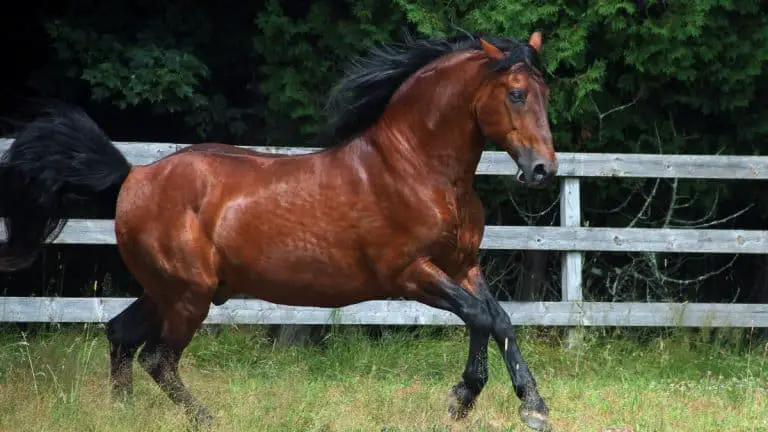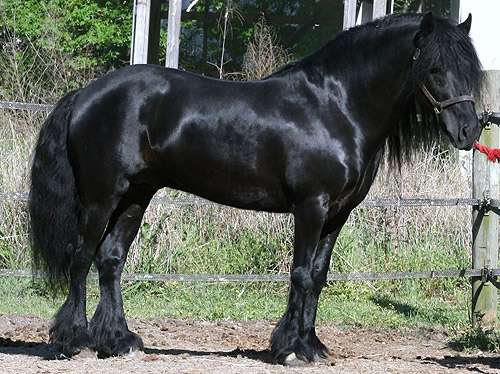
Size
The average height of an Akhal-Teke ranges from 14 hands (56 inches) to 16 hands (64 inches).
Physical Attributes
The Akhal-Teke has long, dipping back, low-set tail, narrow chest, and huge feet. It is slim and fine-boned. Its neck is angled rather than sloped, and its tall head has wide almond-shaped eyes and a long nose. It appears to be gliding when it moves.
Color
Bay, chestnut, dun, black, cream, grey, and palomino are the most popular colors for Akhal Teke horses.

History and Origin
The horses of this breed initially originated in Turkmenistan’s Karakum Desert, where they had to withstand extremes of heat and cold in addition to a lack of food and water. The Akhal-Tekes coexisted closely with their nomadic human neighbors since one was vital to the existence of the other. The horses were specifically bred by the tribesmen to be athletic. The breed was then given the name of the Teke Turkmen tribe, which lived close to the Akhal oasis.
Diet and Nutrition
As a desert horse with little grass available, the Akhal-Teke evolved to subsist on a sparse diet. However, traditionally, protein was essential for its endurance. Today’s horses may have a diet that is similarly well-balanced, consisting of high-quality hay, pasture, and occasional grain.
Grooming
For the Akhal-Teke, standard equine grooming is often sufficient. At least once or twice a week, brush and comb your horse to get rid of knots, debris, and filth. Regularly bathe it, particularly to bring out its metallic sheen. Additionally, check and clean its hooves every day to check for wounds and stop infections.
Uses
Today, Akhal-Tekes are ridden for pleasure, long-distance racing, dressage, and showjumping. An Akhal-Teke is even considered a status symbol in Russia.
Table





